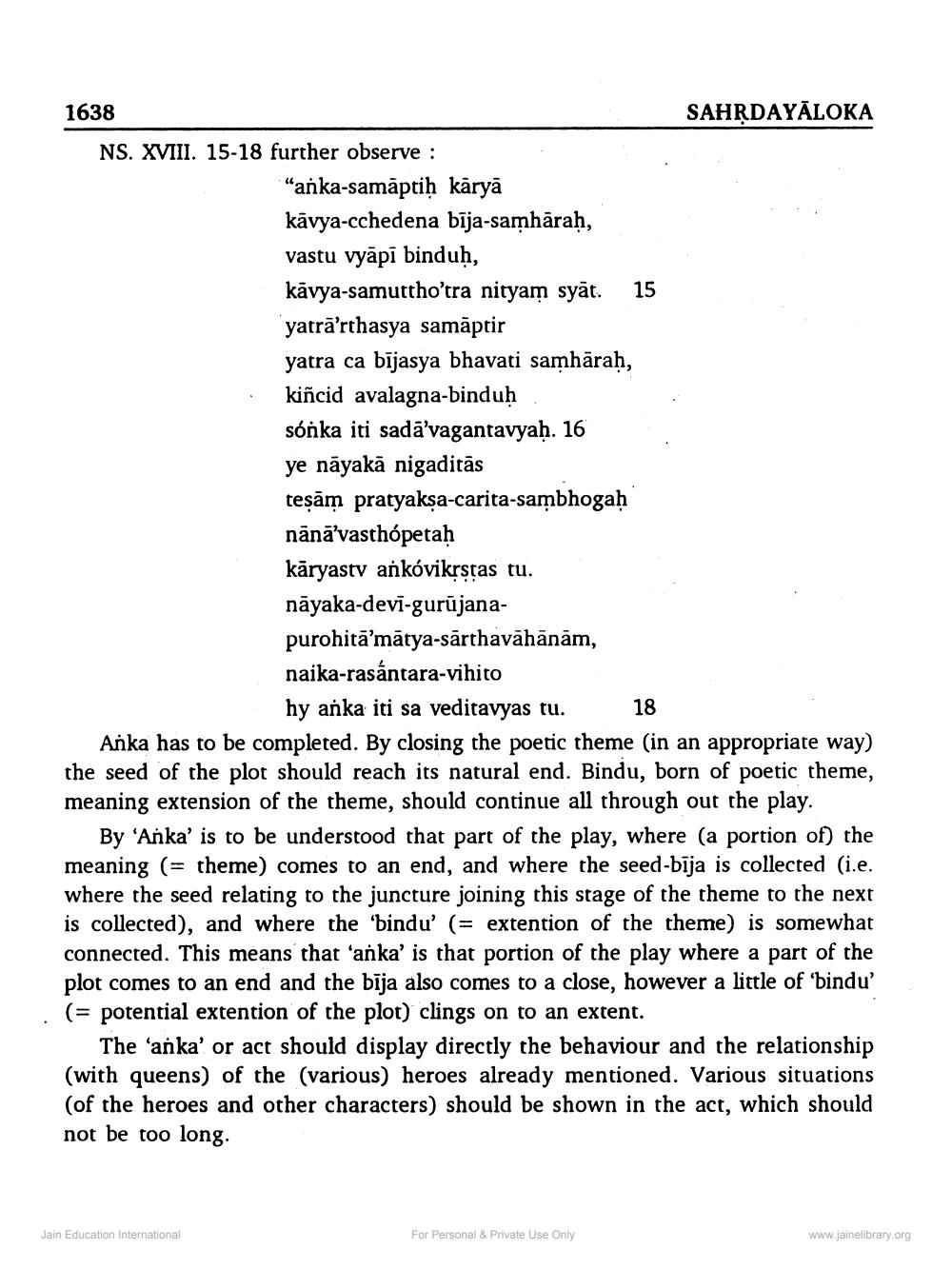________________
1638
SAHRDAYĀLOKA NS. XVIII. 15-18 further observe :
"anka-samāptiḥ kāryā kāvya-cchedena bīja-samhāraḥ, vastu vyāpi binduḥ, kāvya-samuttho'tra nityam syāt. 15 yatrā’rthasya samāptir yatra ca bījasya bhavati samhāraḥ, kiñcid avalagna-binduh sónka iti sadā'vagantavyaḥ. 16 ye nāyakā nigaditās teşām pratyakşa-carita-sambhogah nānā’vasthópetaḥ kāryastv ankóvikrstas tu. nāyaka-devī-gurūjanapurohitā’mātya-sārthavāhānām, naika-rasántara-vihito
hy anka iti sa veditavyas tu. 18 Anka has to be completed. By closing the poetic theme (in an appropriate way) the seed of the plot should reach its natural end. Bindu, born of poetic theme, meaning extension of the theme, should continue all through out the play.
By 'Anka' is to be understood that part of the play, where (a portion of) the meaning (= theme) comes to an end, and where the seed-bīja is collected (i.e. where the seed relating to the juncture joining this stage of the theme to the next is collected), and where the 'bindu' (= extention of the theme) is somewhat connected. This means that 'anka' is that portion of the play where a part of the
an end and the bīia also comes to a close, however a little of 'bindu' (= potential extention of the plot) clings on to an extent.
The ‘anka' or act should display directly the behaviour and the relationship (with queens) of the (various) heroes already mentioned. Various situations (of the heroes and other characters) should be shown in the act, which should not be too long.
Jain Education International
For Personal & Private Use Only
www.jainelibrary.org




